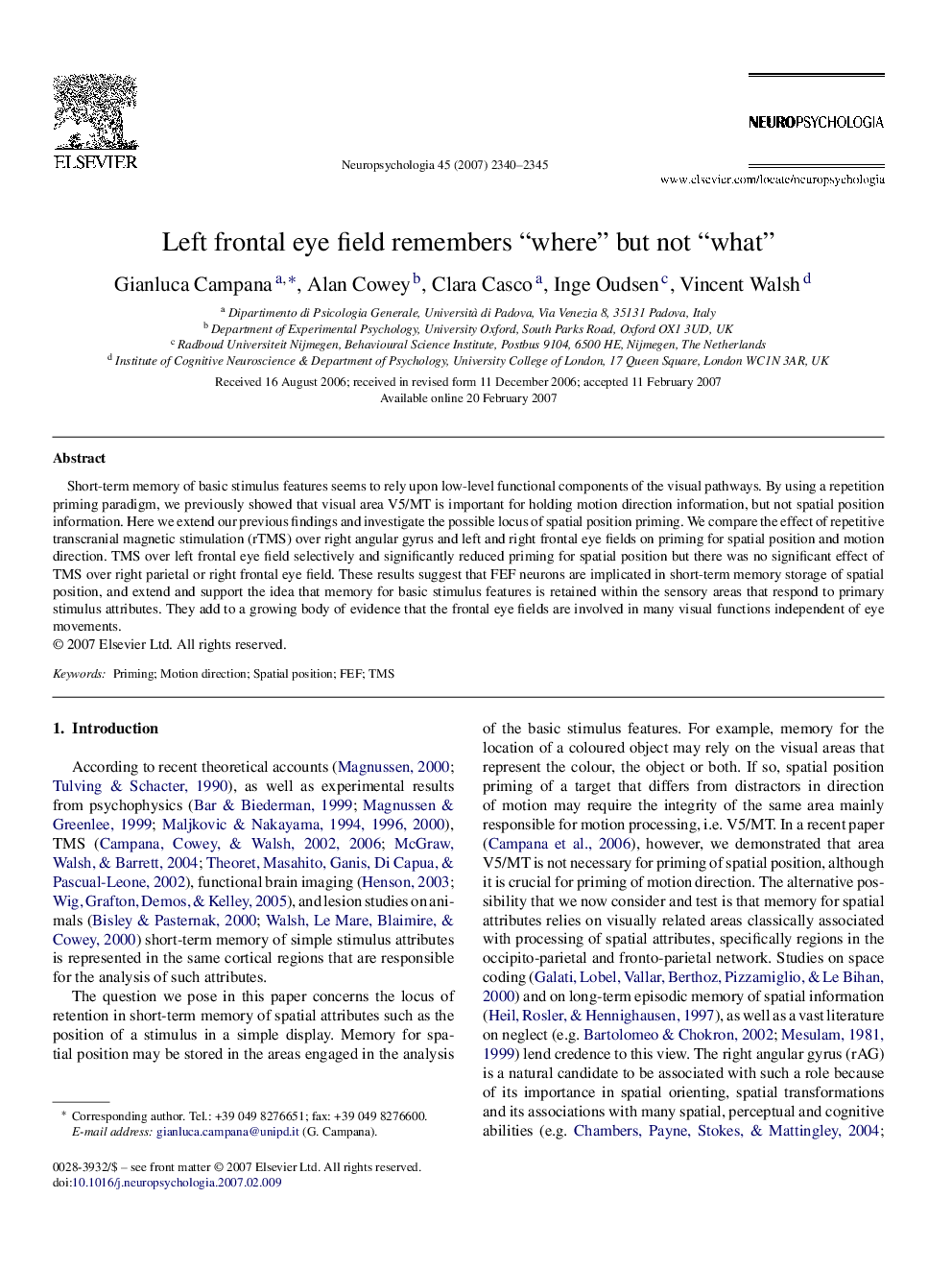| Article ID | Journal | Published Year | Pages | File Type |
|---|---|---|---|---|
| 10466897 | Neuropsychologia | 2007 | 6 Pages |
Abstract
Short-term memory of basic stimulus features seems to rely upon low-level functional components of the visual pathways. By using a repetition priming paradigm, we previously showed that visual area V5/MT is important for holding motion direction information, but not spatial position information. Here we extend our previous findings and investigate the possible locus of spatial position priming. We compare the effect of repetitive transcranial magnetic stimulation (rTMS) over right angular gyrus and left and right frontal eye fields on priming for spatial position and motion direction. TMS over left frontal eye field selectively and significantly reduced priming for spatial position but there was no significant effect of TMS over right parietal or right frontal eye field. These results suggest that FEF neurons are implicated in short-term memory storage of spatial position, and extend and support the idea that memory for basic stimulus features is retained within the sensory areas that respond to primary stimulus attributes. They add to a growing body of evidence that the frontal eye fields are involved in many visual functions independent of eye movements.
Related Topics
Life Sciences
Neuroscience
Behavioral Neuroscience
Authors
Gianluca Campana, Alan Cowey, Clara Casco, Inge Oudsen, Vincent Walsh,
